The Return of the Native: #ChongqingUniversity and the Municipalities City Up the Yangzi River
Returning to Chongda 2018
If you have not heard of the Chinese city of Chongqing, there is something missing. I mean, even if you’ve never been to China or never intend to go, you have heard of the fabulous Chongqing HotPot, right? Perhaps not, if you are not a foodie.
Never mind if you are just a little disoriented as to where exactly Chongqing is by looking at the map of the Middle Kingdom. Chongqing, in Southwestern China, is famous for many things, among the Chinese people anyway, and aside from its mountainous landscape, its stunning night views overlooking the confluence of two big rivers and many varieties of hot and spicy food, it was known to be the wartime capital of China during the WWII (1937-45).
In the last two decades, Chongqing’s political and economic significance has been further enhanced by its elevation from the Province of Sichuan to become the 4th directly controlled Municipality under the Chinese government (1997 onwards). As a result of that restructuring, it is now the most populous Chinese municipality with 26 districts and numerous counties, with a population of around 34 million in Greater Chongqing, bigger than many countries.
[image error]
I have personal and professional ties with this city, and in particular, with an excellent Chinese institution, Chongqing University, Chongda in short.
Almost four decades ago to date, Chongda was a leading technological university, with only one campus in the city’s cultural and educational hub, Shapingba District. When I was offered a place to read English Literature and Language Teaching in Chongda, I left my hometown about 175 kilometres away and never looked back. Interestingly, my birth place is now a district of Chongqing so effectively I should call Chongqing ‘home’.
Needless to say, Chongda has changed and expanded tremendously in the last thirty years since I left it for the UK in 1988. With its four campuses A, B, C and D, it is a fully comprehensive university among China’s finest institutions.
I spent the best part of my late teens and early twenties, first as a student and then a junior academic starting out on my career. It was a place which witnessed my very first affair of the heart and the subsequent heartbreak. It was also a place where my protagonist of the Journey to the West trilogy Pearl Zhang was wooed, got married and gave birth to her daughter Liyuan – by the way, Liyuan, also called Grace, is the protagonist of my new, currently work in progress ‘Journey to the East’.
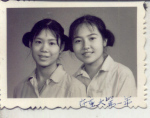

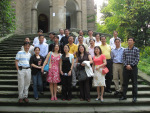
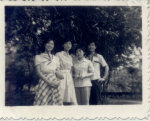
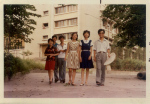

In the beginning of April 2018, I returned once again to Chongqing. It did not simply give me a chance to see family, friends, former classmates and colleagues, it allowed me to renew my professional relationship with Chongda. I was able to introduce my most recent employer, University of Strathclyde to my very first, Chongda. I am very grateful to a number of people who have made this happen. First of all, it was great that the Associate Principal and Executive Dean of HaSS, Professor Douglas Brodie was able to join me in Chongqing, making my return to Chongda an ‘official’ visit. Then of course, my former colleagues and friends in Chongda, particularly, Dean Peng Jin and Professor Huang Ping, these fine ladies helped making the necessary arrangements for our very brief and fruitful visit. I am optimistic that mutually beneficial collaborations will take in many different forms and Scotland will welcome generations of students and staff from Chongqing, and vice versa.


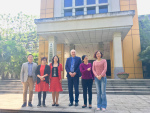
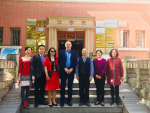


Work aside, one simply could not go to Chongqing without enjoying a Hotpot treat.
As it turned out, I had a weekend during which my brother Brad and Sister-in-law Shirley took me to Nanshan for a fabulous retreat. We stayed in the purpose-built Mount Mirage which presented wonderful views of bamboo forests, the city and scenic South Mountain. In the evening, we joined thousands of diners from all over the city and beyond, flocking to the Hotpot town which more or less occupied half of the mountain.
Hotpot was originally eaten by boatmen on the Yangzi River but it quickly spread all over Chongqing and the rest of the Sichuan. Nowadays, you can find Hotpot places all over the world, from China Town of San Francesco to Sauchiehall Street of Glasgow, Scotland. It is hugely addictive because it uses a mixture of spices, notably Sichuan peppers and chillies to create a super hot, heavy flavoured thick soup, which is kept on the boil at your table. You dip in the food of your choice, then pop into your mouth. As a help-yourself-treat, friends and family usually gather together at one table. Traditional hotpot offers customers cattle guts, cattle bellies, different meats, beancurd and a section of seasonal vegetables. Nowadays you can almost order anything you wish, and you can choose how hot/spicy you want it to be.








My visit to Chongqing was short but sweet. I enjoyed returning to Chongda. I could hardly believe it when I saw the old Number 4 Dormitory still standing in front of the Mingzhu Lake. The Dorm was nicknamed ‘Panda Hall’ which housed all the female students in my day. I had to have my picture taken in front of it, and my nephew had to join me, so there we were.
[image error]
Some things don’t change – No 4 Dormitory
[image error]
I stayed in one of the rooms with 5 other girls when I was aged 17-21
As usual, I end this blog with more pictures of Chongqing, including the fabulous night views. Given Chongqing is one of the most polluted cities in China, it’s not always easy to catch a clear day. Brad told me that many heavy industries have either been moved out of the city or shut down, and Chongqing’s skies now are better than many other mega cities in China.
May Chongqing continue to boom and the famous mountainous views continue to enchant visitors from near and far. As a native of Chongqing, I hope to return again soon.
[image error]
The City of Bridges
[image error]
City of Lights
[image error]
Campus Tour
[image error]
Sports ground where I used to exercise and run
Junying's Blog
- Junying Kirk's profile
- 89 followers



